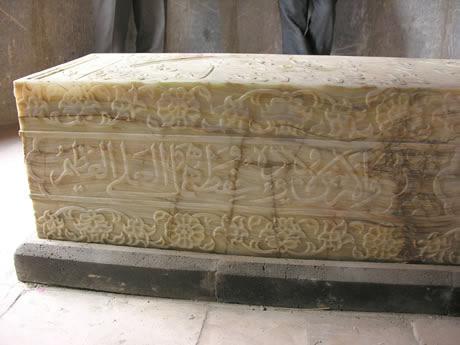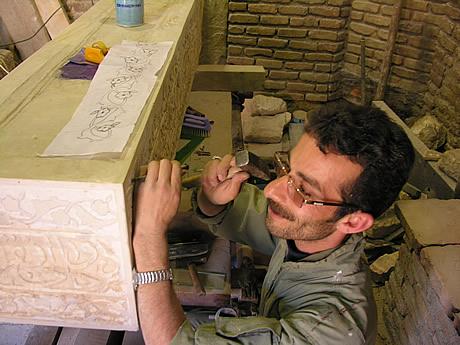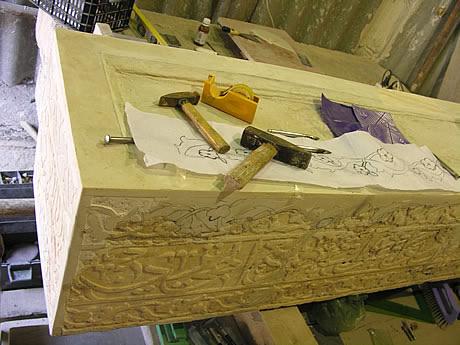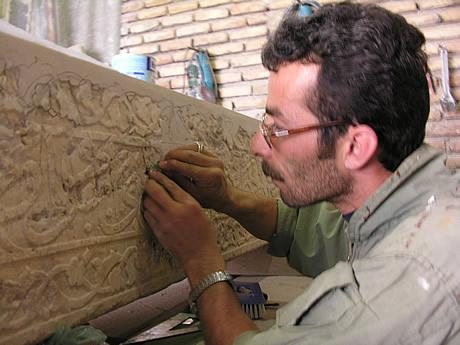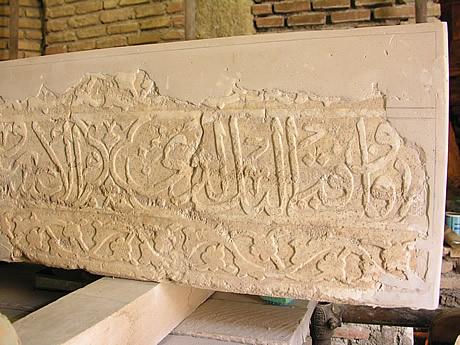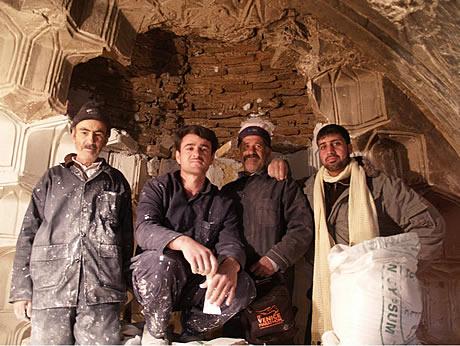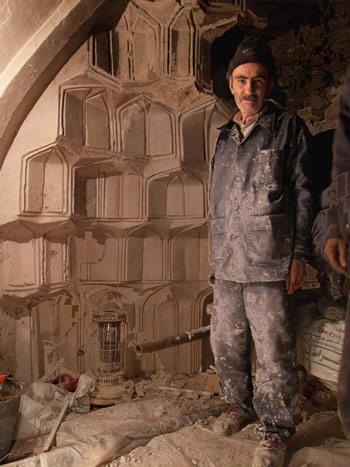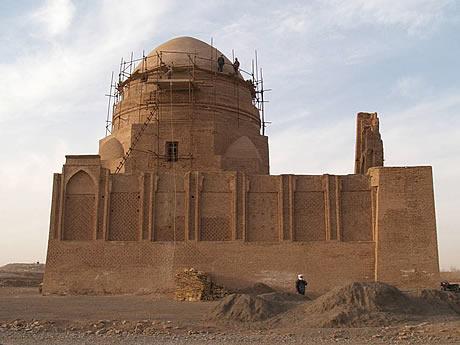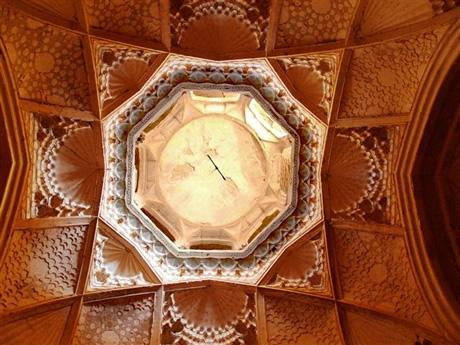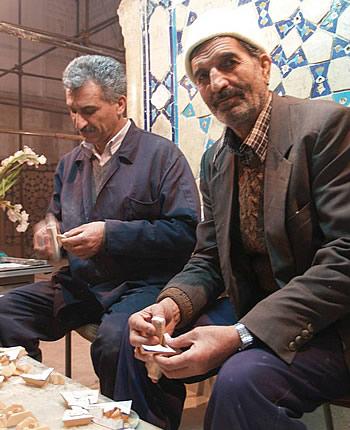Stone Carving
Here is a memorial completed, after two years work, by the stone-carving ustad shown in the other photographs. It is simply gorgeous, but normally languishes under a grubby green baize cloth in a small, dark and locked shrine. However, my ustad friend proudly took me on a trip to let me admire it. [C.S.5]
